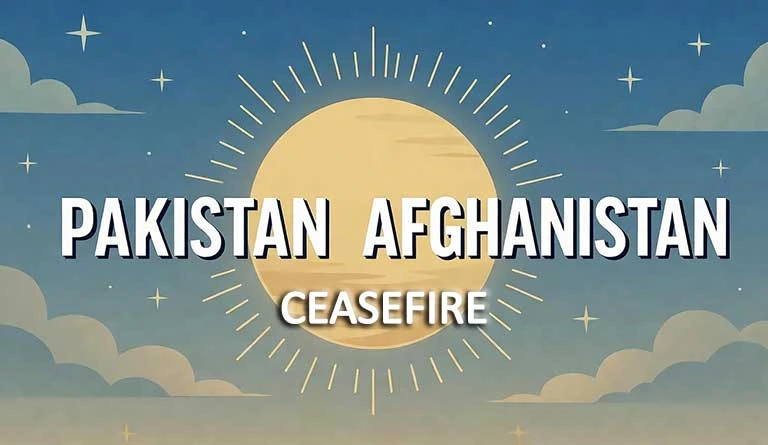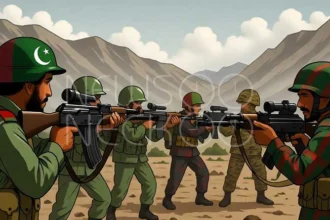The Border That Won’t Stay Quiet: What a Fragile Ceasefire Reveals
There is a particular sound that follows the end of a battle. It is not quite silence, but a tense and fragile quiet, broken by the distant cries of those counting their dead. This is the sound now hanging over the mountainous border between Afghanistan and Pakistan. A 48-hour ceasefire is in effect, a temporary stop to the most intense fighting the two neighbors have seen in years. But the quiet feels thin, and everyone is listening for what might break it.
The violence began with strikes in the Afghan capital, Kabul, and the border province of Paktika. The Taliban government pointed the finger directly at Pakistan. While Islamabad has not officially taken credit, its message was clear. A Pakistani military official stated there is “evidence” that “Afghanistan is being used as a base camp of operations for terrorism in Pakistan.”
This is the old wound that never heals. Pakistan has long accused Afghanistan of sheltering the Pakistani Taliban (TTP), a militant group that has become a major security threat. Since the Afghan Taliban returned to power in 2021, Pakistan has seen a surge in attacks. The response, this time, was swift and brutal.
A War of Words and Numbers
What followed was a deadly exchange that played out in both gunfire and propaganda. The Taliban launched what it called retaliatory attacks against Pak Army. Pakistan’s military responded with strikes of its own, targeting what it said were Taliban camps.
Then came the grim accounting, where the truth is often the first casualty. Both sides claimed death tolls far higher than what their opponent would admit. Pakistan said it killed more than 200 Taliban and militants. The Afghani Taliban claimed to have killed 58 Pakistani soldiers. Independent verification is nearly impossible in this rugged terrain, but the inflated numbers themselves tell a story of deep anger and a desire to appear strong.
You Might Like it: Pakistan Afghanistan conflict:
The Shadow in the Room: India’s Growing Role
To understand this conflict, you cannot look only at the border. You must also look to New Delhi. This recent flare-up happened at a sensitive time: the Taliban’s foreign minister was making a historic visit to India, Pakistan’s main rival.
For Pakistan, this was a serious provocation. Pakistan and India have competed for influence in Afghanistan for decades. The sight of a Taliban minister being welcomed in India, with talks of “enduring friendship,” raised alarms in Islamabad. It made Pakistan feel threatened on both its eastern border with India and its western border with Afghanistan.
This “India factor” is a crucial piece of the puzzle. Pakistan has long believed that having a friendly government in Afghanistan is necessary to counterbalance India’s power. This is why it supported the Taliban for years. Now, that strategy seems to be failing. The Taliban is building its own relationships, and Pakistan feels its influence slipping away.
A Complicated History, An Uncertain Future
The border between Pakistan and Afghanistan, known as the Durand Line, has been disputed for over a century. It is a line drawn by a foreign empire that cuts through the lands of the Pashtun people. Clashes here are frequent, but this recent violence is different. It is more intense and has reached deeper into each country’s territory.
The international community is watching with concern. Countries like China, Russia, and Saudi Arabia have called for calm. China, which has invested heavily in the region, is especially keen to see stability. Even former US President Donald Trump offered to broker peace, claiming, “I’m good at solving wars.”
But the key to a lasting peace may not be in the hands of world leaders. It lies with a militant group: the TTP. The Afghan Taliban is reluctant to crack down on them, as they fought together against US forces. For Pakistan, this is the core of the problem.
The ceasefire is a pause, not a solution. It is a chance for dialogue, but the underlying issues remain. The border is quiet for now, but the mountains have a long memory. They remember all the other ceasefires that have come and gone. The question everyone is asking is whether this time is different, or if the quiet is just the prelude to another, even louder, storm.
Author: Yasir Khan
Date: 15 Oct, 2025
For More Updates, Visit Newsneck












